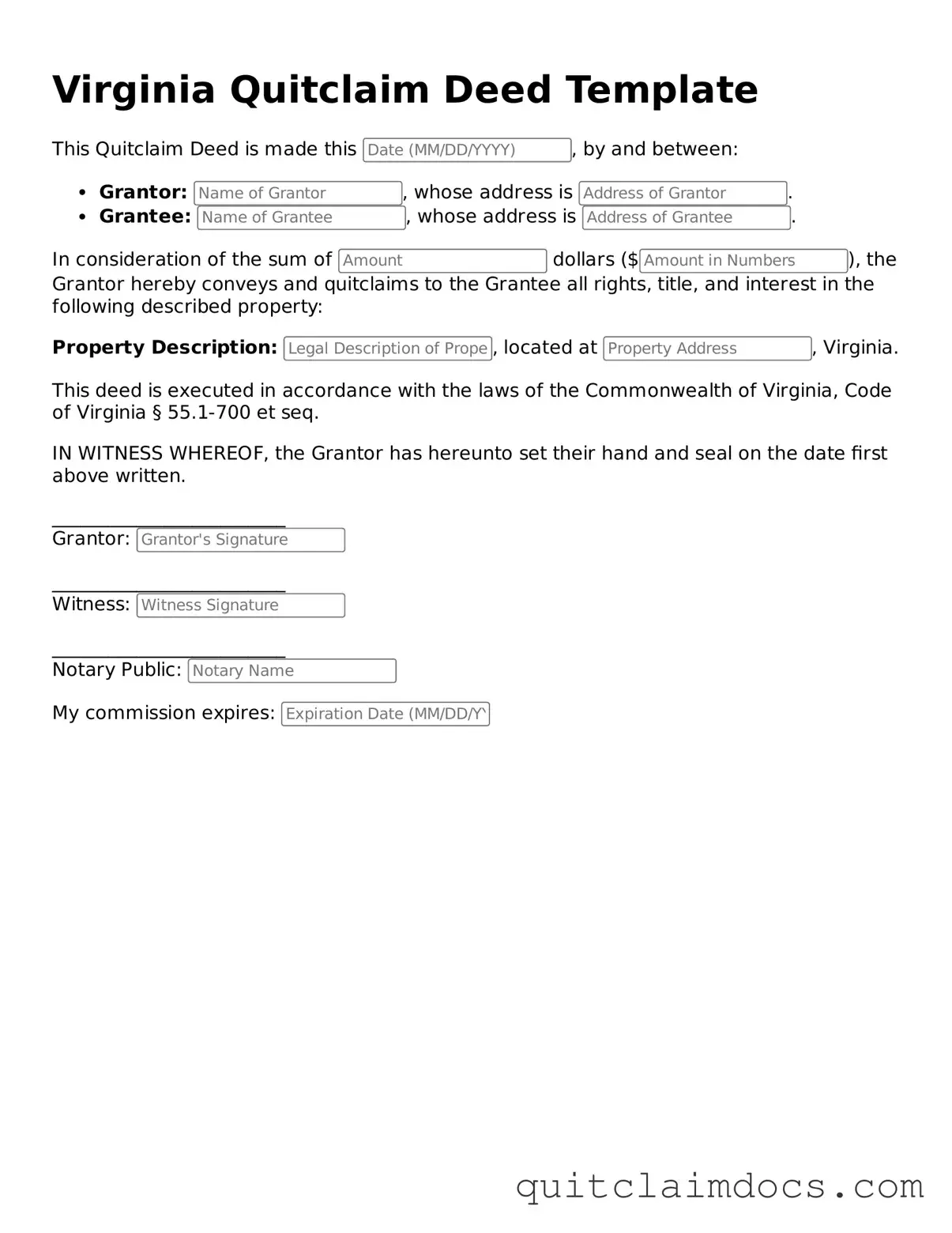Free Quitclaim Deed Template for Virginia
A Virginia Quitclaim Deed is a legal document used to transfer ownership of real estate from one party to another without guaranteeing the title's validity. This form is often utilized in situations where the grantor wants to relinquish any interest in the property, making it a straightforward option for property transfers among family members or friends. To get started on your own Quitclaim Deed, fill out the form by clicking the button below.
Customize Quitclaim Deed Online
